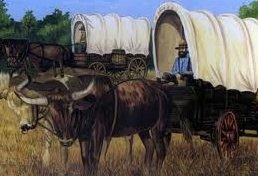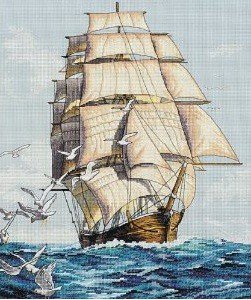Traveling by sailing ship on the world’s oceans and by the “Prairie Schooner” across our continent, Lydia Bryant Hines had a life of adventure. The following profile of this exceptional Salem woman is condensed from an article in the Pacific Christian Advocate of April, 1870.
In 1830 Lydia Bryant married Gustavus Hines. In the following winter they settled in the woods of Ellicottsville, NY. Her husband received his first license to preach the gospel, and was appointed by his presiding elder to travel the circuit on which they were living; and she very unexpectedly found cast upon her the responsibilities of the life of a Methodist itinerant preacher’s companion. In all her calculations for the future, she had made no reckoning for this and the prospect appalled her. However she became convinced that the call of the Church was indeed the call of God: and accordingly yielded and prepared herself as best she could.
Early in the spring of 1839 she was called upon to endure perhaps the most severe trial of her life; the severing of all ties that bound her to the land of her nativity, the committal of herself to the treacherous storms of ocean, and in connection with others, to seek, as a missionary, a far distant home on the then almost unknown shores of the great Pacific. The evening of Oct. 9th, 1839 found her for the first time on the deck of a ship. Nearly eight months of ocean life, during which she was permitted to look in upon Brazil, Chili, and the Sandwich Islands, acquainted her with the lights and shadows of a sea voyage in a crowded vessel. June 1st, 1840 found her at Vancouver, and exchanging the ship Lausanne for a Chinook canoe, by which the waters of Oregon were then navigated, she arrived on the 15th of the same month.
Early in the spring of 1841 it was her lot to occupy a small shanty located near what is called the “old parsonage” in Salem. She often feared that she and her family would fall victims to savage fury—and the more so as she now had under her protection a young and helpless sister. One day, at the dusk of evening, in the fall of the year, while the neighborhood was agitated by rumors of Indian outbreaks, there appeared immediately in front of the parsonage 12 mounted savages of the Molalla tribe, painted in the most hideous and frightful manner, and rushing up into the very dooryard, all dismounted, giving evidence at the same time that their visit was not friendly. Mr. H. went out to meet them, and approaching one who appeared to be their leader, offered him his hand in token of friendship. He refused and immediately the whole band set up a horrid laugh. This demonstration of hostility so alarmed Mrs. Hines that she resolved to take her little sister, and if possible, escape to a house on the north side of Mill Creek, occupied by the families of L. H. Judson and James Olley, (sister of Judson) the only house within many miles. She took a circuitous route for a distance down the little stream running in the rear of the parsonage, so as to keep from the sight of the Indians as long as possible. Sometimes leading little Julia by the hand and at others lifting her in her arms, she struck across the prairie northward, struggling through the tall grass with her precious burden, while expecting every moment to be pursued and feel the violent hand of a savage laid upon her. On reaching the creek, not daring to extend her flight to a footbridge a short distance below, she dashed straight through the current, bearing her sister in her arms. Not being pursued, she gained the house in safety, and collecting all the adults belonging to the families, she returned with them through the darkness to look after the fate of her husband. The savages had in the meantime encamped in [the] rear of the parsonage, where they remained quietly for a few hours, and then before daylight decamped, bearing with them as booty some provisions and a valuable horse, the property of Mr. Hines.
In the spring of 1842, by the death of Mrs. Jason Lee, the infant daughter, but three weeks old, was taken by Mrs. Hines from the bed where its mother, just deceased, still reposed, and conveyed to her own home. For reasons that need not be inserted in this sketch, Mr. Lee, Mr. and Mrs. Hines and family, left Oregon in Feb. 1844, intending to proceed to the eastern states. But on arriving at Honolulu it was found that there was no sailing for any of the Atlantic ports for several months. It was however ascertained that a small Hawaiian schooner about to sail for Mexico, would take one person on board. And Mr. Lee being exceedingly anxious to proceed, took passage in hope of being able in some way to get from Mexico to New York: while Mr. Hines and family, including Mr. Lee’s daughter, decided to return to Oregon. It was here, on the Island of Oahu on the 28th of Feb., 1844, that with flowing tears and words of sympathy and love Mrs. Hines received the daughter from the arms of the weeping father, and made a solemn pledge that all a mother could do for a daughter she would do for the motherless child that then in her heart she adopted as her own. Mrs. Hines with her family returned again to Oregon, and arrived at Oregon City the last of April. Residing there for the best part of two years, she was active in Church interests, but especially in searching out the destitute among the emigrants who crossed the plains, and in affording relief. During the years 1844-5, in company with her husband, she visited every portion of Oregon then occupied by whites, for Missionary purposes, traveling on horseback and in canoes.
Lifeline
In September 1845, it became the duty of Mrs. Hines to leave Oregon again and return to the States. Accordingly, she with Mr. H. and their two adopted daughters bade a second adieu to the wooded mountains of Oregon, and performed another voyage to the Sandwich Islands, where she spent upwards of three months. From the Islands, she had the opportunity of crossing the Pacific Ocean to the coast of China and of spending upwards of two months at Hong Kong, Macao, and Canton. From thence, in the good ship Leeland, the Chinese and Java Seas were traversed, the Straits of Sunday penetrated, the Indian Ocean crossed, the Cape of Good Hope doubled, the Atlantic Ocean again traced, and on the 5th of May the missionary family arrived in safety at New York City. [The anticipated reunion of Lucyanna and her father was not to be: Jason Lee had died at his sister’s home just two months before.]

In 1852, very unexpectedly to her husband, she informed him that she would be glad to return again to the Pacific Coast, and there spend the remainder of her days. Sympathizing in this feeling, Mr. Hines asked and obtained a transfer to the Oregon Conference, with the privilege of returning to the country by way of the Plains. The journey across the Plains, which was performed the same year, was one of great interest to Mrs. Hines though attended with great toil and exposure. Their first place of residence after reaching Oregon in October 1853 was on the Vancouver circuit; and in the spring of 1854 by virtue of the appointment of Mr. H. to Salem she became a resident of that city. On this year she received a third orphan [this was Marie Smith] into her family and into her heart. Here, for fourteen years she has had a settled home, though from time to time she has extended her travels to various parts of the State and Washington Territory. In this home she closed her highly useful and eventful life in great peace, March 14th, 1870.
Lydia is buried near the original entrance to Lee Mission Cemetery, a site now unmarked.


